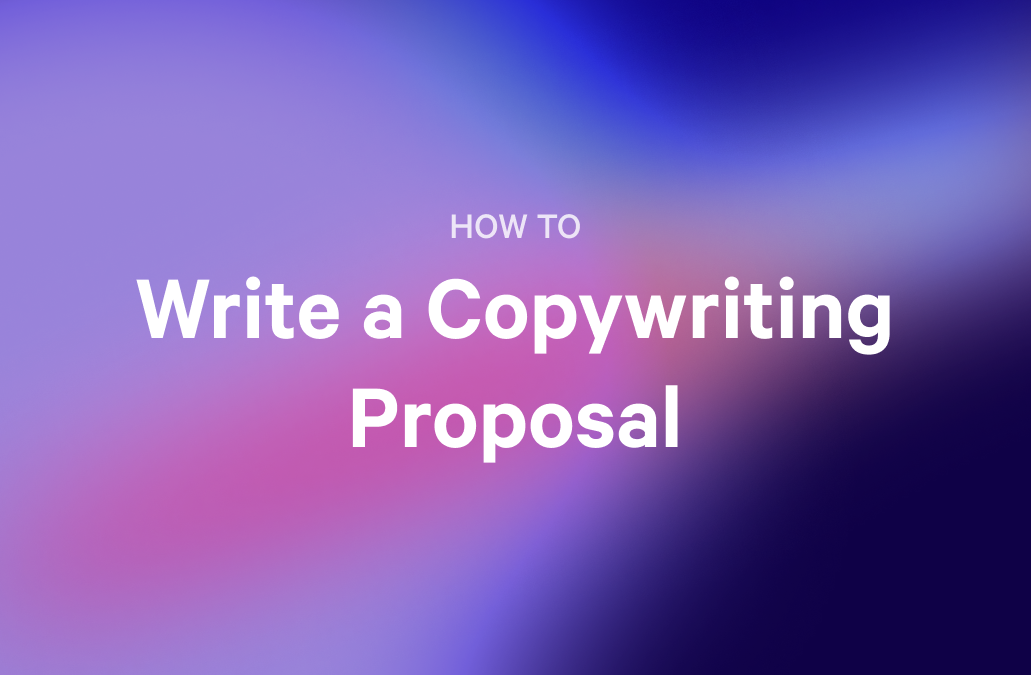As a solar installer, you don't just sell solar panels; you offer people a way to live more sustainably and protect the environment. But explaining all this in a proposal, with all the costs, benefits, and technical details, can be overwhelming.
But don't despair; we're here to help you!
We'll show you how to write a solar proposal that contains more than just a list of parts and prices; it addresses your customers' wants and concerns, showing how their choice can lead to a greener, more cost-effective future. And on that sunny note, let's begin…
Key takeaways:
- Solar proposals should address customer needs and concerns, highlighting the environmental and cost benefits.
- A good proposal includes company introduction, needs analysis, project overview, system design, product specifications, energy estimates, cost breakdown, installation timeline, and maintenance details.
- The proposal should be customer-centric, avoiding technical jargon and focusing on the practical benefits of the solar installation.
- It's important to provide a detailed cost breakdown and financial analysis, including potential savings and government incentives.
- Post-installation support and maintenance options should be clearly outlined to reassure customers.
What is a solar proposal?
A solar panel installation proposal is crucial for both the solar installer and the customer. It sets out all the essential details of the solar project, describing where the solar panels will be placed, how they'll be installed, and the benefits of using solar energy.
When you create a solar proposal, you can show that your solar solution meets the specific needs of your customers, showing them how solar energy can make a real difference.
This offer is your chance to prove your expertise in solar power and reassure your customers that they're making the right choice.
Our solar installation proposal template gives you a good idea of what a good one looks like.
Steps to take when writing a solar proposal: Key elements to include
Here, you'll find an overview of all the essential elements you should include when you write a sales proposal. This way, you can ensure that your offer includes everything you need while highlighting your unique skills and value.
Read next: How to write an effective proposal cover letter
1. Introduce your company and highlight your expertise
This is where you give your customer an overview of who you are, what you stand for, and why you're the right choice for their solar energy needs.
Start by introducing your company in a friendly yet engaging tone. Share your company's journey into the solar industry and highlight milestones demonstrating your commitment and experience installing solar panels.
You should also talk about your present – the services you offer, the areas in which you excel, and what makes your approach unique. Maybe it's your cutting-edge technology, customer-centric service model, or innovative financing solutions. Whatever sets you apart as a solar brand installer, this is the place to showcase it.
2. Perform a needs analysis for your client
This part is crucial in any sales methodology because it shows you care about offering a solution perfectly tailored to each client's situation. Start by talking about why it's essential to take a custom approach. Every client has different pain points - some might be families who want to live more eco-friendly, while others could be businesses that want to save on energy costs.
Explain how you'll get to know your customer's energy needs. This could include visiting their property, looking at the latest energy bills, or conversing with the customer. Make it clear that you aren't just offering a standard service but taking the time to understand their needs.
You can go into further detail if you know your potential client's main motivation here. If they care deeply about the environment, explain why solar energy fits well with their values. If they're more interested in saving money, tell them how to use solar energy to reduce their bills and make money in the long run.
3. Create an overview of the solar installation project
This section is about explaining in a friendly and clear way what the solar project involves. It's easy to overwhelm your prospect with technical specifications and the intricacies of choosing and installing the right solar panels, but that's where you might lose your audience, so simple is best here.
Start by introducing the solar project in a way that feels personal to the client. Let's say you plan to install solar panels on a single-family home. Explain that the system works for them on a simple, practical level so they see the benefits without getting bogged down in technical jargon and detail.
4. Provide a detailed system design and layout
Here, you can demonstrate your expertise and explain how your proposed solar system perfectly fits your customer's property.
Start with an introduction to the design of the system. Explain how the solar panels will be arranged and ensure your customer understands why you chose this layout. For example, you could talk about how the panels will be positioned to catch the most sun, taking into account things like the angle of the roof and nearby trees or buildings that might cast a shadow.
Get into the technical details, but again, keep it simple. Talk about the sorts of panels and inverters you use, how they harness solar energy, and why they're the best choice for this project.
A good diagram or picture can help make complicated ideas easier to understand. Don't forget to talk about what the solar panels will look like. This can be a common concern for customers who have an eye on design. They could assume that no matter what they do, they risk ruining the aesthetic of their home. You can alleviate these concerns by stressing the practical benefits and showing how they look on other properties.
5. Outline the product and material specifications
Start with the solar panel technology. Describe the type and model you have chosen and explain why they're best suited to your client's needs. If you've picked high-efficiency panels, explain why they work better in a smaller space. Help your customer see the actual value of your choice.
Then, talk about the inverters. Tell them what type of inverter you recommend and why it's right for their system. Explain simply what that means if it's a string inverter or a micro-inverter. Then, mention the mounting systems and other materials you'll use. If you've chosen a particular mounting technique because it's easier to install or will last longer, highlight that.
Discussing the warranties and how long the materials will last is also vital. Solar panels are an investment, and customers need to know that theirs is a good one.
6. Conduct (and include) energy production estimates
Here, you can show your customer what your proposed solar setup can do.
Start with the estimated residential solar energy yield of your proposed setup. Explain what these numbers mean in everyday terms.
It's also important to say how you arrived at these estimates, so discuss how much projected energy the area gets and how the panels should be placed.
Also, explain what these figures can mean for energy production when it comes to saving money and helping the environment. You could estimate how much the electricity bill could be lowered and the carbon footprint reduced.
7. Share the cost breakdown and financial analysis
Help your client understand every aspect of what they're paying for and why it's a good investment.
Lay out all the costs associated with the installation. Break it down into the price of the solar panels, inverters, mounting systems, and other equipment needed. Be specific – list each item and its cost. This way, you build customer trust as they can see exactly where their money is going. Using a streamlined solar sales CRM ensures every detail is organized efficiently.
Next, talk about how the investment in a solar system will pay off in the long term. It's not just about the money they're spending now but also the savings they'll see over time. Explain to them how their monthly electricity bills will go down and try to estimate when they will have recouped their investment.
Don't forget to mention financial incentives such as government subsidies or tax benefits that can lower the overall cost, too. Ensure they know about these so they can take full advantage- it's amazing how many people don’t!
8. Create a timeline for the installation process
In this part, you guide your customer through the installation process.
Start by explaining the first steps of the installation. This includes inspecting the property, obtaining the necessary permits, and final planning the solar setup. Explain each step in detail and how you'll choose the best place for the solar panels when inspecting the property, watching out for potential issues.
Then, describe the main part of the installation. Break it down into smaller steps. For example, first, you set up the brackets for the panels, then install the panels themselves, and finally, do the wiring and connect everything to the power grid. Explain each part in simple language and explain how long each part will take.
You should set a realistic timeline for the project. Be honest about how long it'll take and how the long-term benefits that follow this short-term disruption.
9. Explain the required maintenance and customer service options
This part of your proposal is about showing your client how you will support them after their solar panels are installed and running. Your customers should know they can call someone with any problems or questions. Tell them how they can reach your customer support team, e.g., via a phone number or email, and how quickly they can expect a response. This reassurance can actually be a great selling point, too.
10. Proofread and review the proposal
Finally, ensure everything in your solar proposal is perfect. It's not just looking for spelling mistakes (though that's a good start!), it's also about making sure your proposal is clear and professional.
Review all the technical details, costs, and specifications of your solar sales presentation to ensure they're correct.
Take care to explain technical information in a way that is easy for the customer to grasp. Ultimately, you aim to ensure the customer can easily follow the conversation and fully understand the information you provide.
Check out our video on the top proposal mistakes you need to avoid:
Example: Solar Proposal Template
Writing a solar sales proposal that's easy for customers to understand can be difficult, especially if you're a more tech-oriented company.
And that's where an installation project proposal template can come in handy. Proposal templates help you save time and effort and are a visually impressive document that clearly and professionally shows your offer.
Check out Qwilr's Solar Installation Proposal Template for an example of how to set up your proposal - you can actually use this template as the base for your own or generate one in minutes using Qwilr's AI proposal generator.
Here is what our proposal template includes:
- Introduction: This is where you introduce what the proposal will cover.
- Understanding Your Needs: Here, you show that you've heard the client's needs. It's all about showing empathy and understanding their specific challenges.
- Your Priorities: This part is to reassure the client that their priorities are yours. It's where you align your proposal with what's most important to them, whether it's saving money, efficiency, or environmental impact.
- What Success Looks Like: Help the client envision a successful outcome. This optimistic section is designed to help them see the benefits and positive impact of choosing your services.
- 12-Month Goals: Here, you'll outline achievable goals for the first year. This demonstrates your commitment to not just immediate results but also the long-term success of the solar installation.
- Our Approach: Explain your unique approach to solar installation. This is where you can shine a light on your expertise and explain why your methods are effective.
- Service Details: In this section, detail exactly what your services include. Ensure the client understands each aspect of your offer with a clear and thorough explanation.
- Our Achievements: Share your success stories. This is where you can build confidence in your abilities by highlighting your past achievements and experience.
- Our Team: Introduce the people behind the project. Include brief information about the team's skills and experience.
- Investment Required: Be upfront about costs. Provide a clear, detailed breakdown of the investment needed, ensuring the client knows what they're paying for and its value.
- Contact Us: End with an invitation for the client to contact. Make sure they know how to contact you and reassure them that you're ready to answer any questions they may have.
You can also learn more in our guide on how to structure a proposal.
Creating a better and more robust solar proposal
Combining technical know-how with a straightforward, customer-oriented approach is vital to creating an effective solar installation proposal. Your goal is to present a solar energy solution and a journey tailored to the customer's specific requirements.
Tools like Qwilr’s solar installation template will simplify and speed up this process for you, too, so you can spend your time on delivering that stellar customer experience you're known for.
About the author

Brendan Connaughton|Head of Growth Marketing
Brendan heads up growth marketing and demand generation at Qwilr, overseeing performance marketing, SEO, and lifecycle initiatives. Brendan has been instrumental in developing go-to-market functions for a number of high-growth startups and challenger brands.
Frequently asked questions
A good solar proposal should be simple and easy to understand while maintaining a professional tone. It's essential to clearly outline the details of the project, including the installation steps, the costs, and the benefits it offers. This makes it easier for the reader to make a confident, informed decision.
Key elements include company introduction, needs analysis, project overview, system design, product specifications, energy estimates, cost breakdown, installation timeline, and maintenance details. It's important to focus on the practical benefits of the solar installation and provide a detailed cost breakdown and financial analysis.
The cost breakdown should be detailed and transparent, listing each item and its cost. It should also include a financial analysis showing potential savings and payback period. Mention any government incentives or tax benefits that can lower the overall cost.
The project overview should explain what the solar project involves in a friendly and clear way. It should introduce the solar project in a way that feels personal to the client, explaining the benefits without getting bogged down in technical jargon and detail.
You can reassure customers by explaining how the panels will be arranged and why you chose this layout. A good diagram or picture can help make complicated ideas easier to understand. Stress the practical benefits and show how they look on other properties.
The proposal should clearly outline post-installation support and maintenance options to reassure customers. It should explain how customers can reach your support team, how quickly they can expect a response, and what kind of assistance they can expect.


